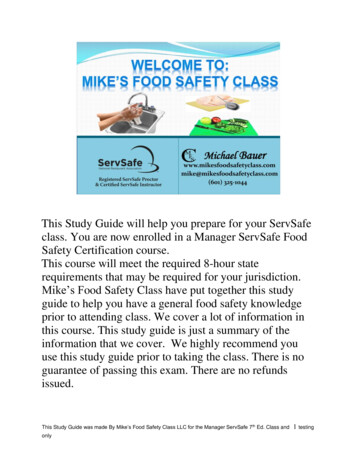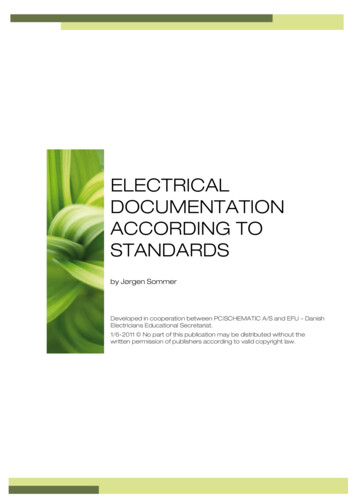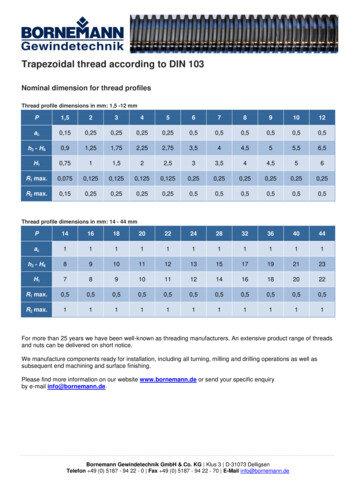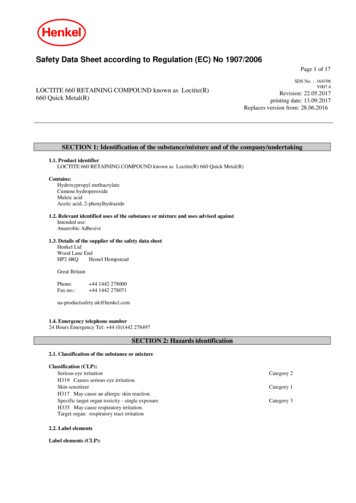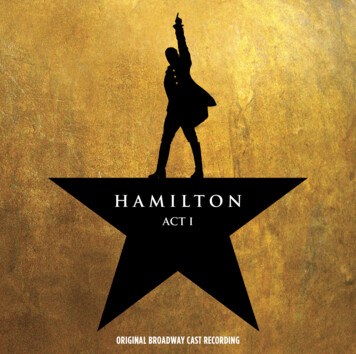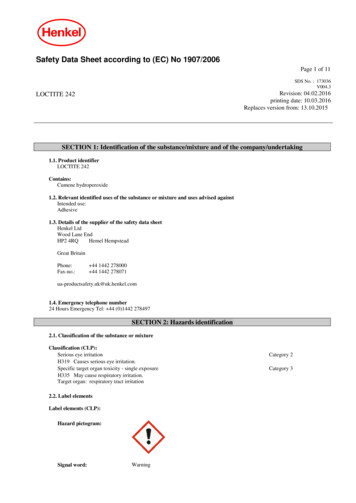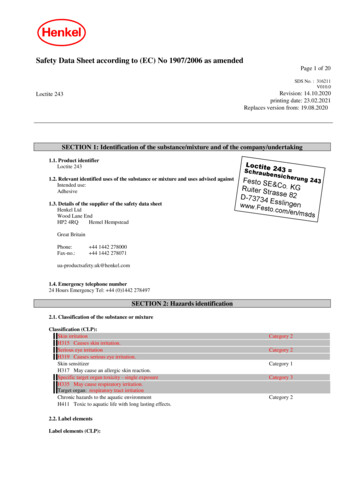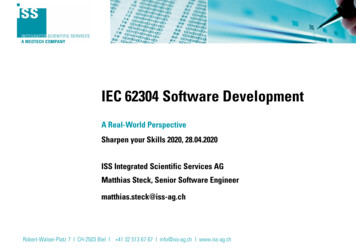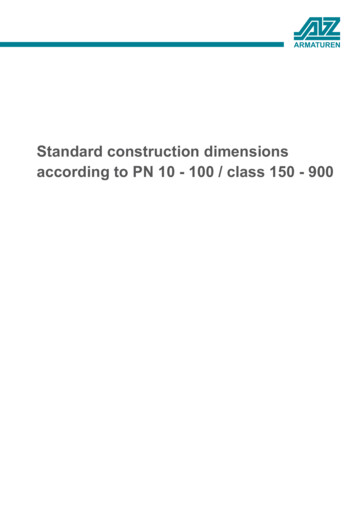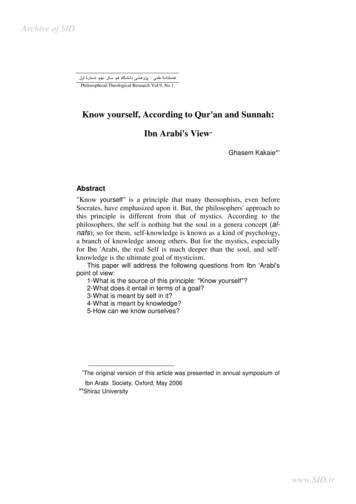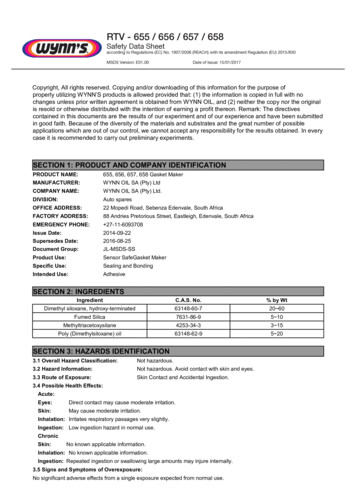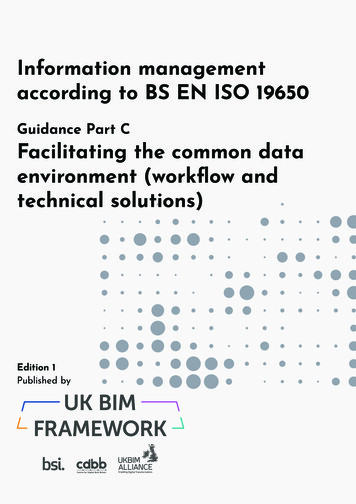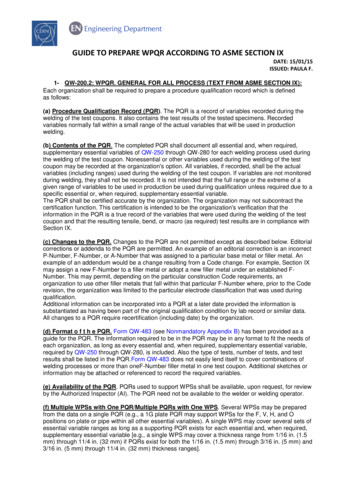
Transcription
GUIDE TO PREPARE WPQR ACCORDING TO ASME SECTION IXDATE: 15/01/15ISSUED: PAULA F.1- QW-200.2: WPQR. GENERAL FOR ALL PROCESS (TEXT FROM ASME SECTION IX):Each organization shall be required to prepare a procedure qualification record which is definedas follows:(a) Procedure Qualification Record (PQR). The PQR is a record of variables recorded during thewelding of the test coupons. It also contains the test results of the tested specimens. Recordedvariables normally fall within a small range of the actual variables that will be used in productionwelding.(b) Contents of the PQR. The completed PQR shall document all essential and, when required,supplementary essential variables of QW-250 through QW‐280 for each welding process used duringthe welding of the test coupon. Nonessential or other variables used during the welding of the testcoupon may be recorded at the organization's option. All variables, if recorded, shall be the actualvariables (including ranges) used during the welding of the test coupon. If variables are not monitoredduring welding, they shall not be recorded. It is not intended that the full range or the extreme of agiven range of variables to be used in production be used during qualification unless required due to aspecific essential or, when required, supplementary essential variable.The PQR shall be certified accurate by the organization. The organization may not subcontract thecertification function. This certification is intended to be the organization's verification that theinformation in the PQR is a true record of the variables that were used during the welding of the testcoupon and that the resulting tensile, bend, or macro (as required) test results are in compliance withSection IX.(c) Changes to the PQR. Changes to the PQR are not permitted except as described below. Editorialcorrections or addenda to the PQR are permitted. An example of an editorial correction is an incorrectP‐Number, F‐Number, or A‐Number that was assigned to a particular base metal or filler metal. Anexample of an addendum would be a change resulting from a Code change. For example, Section IXmay assign a new F‐Number to a filler metal or adopt a new filler metal under an established F‐Number. This may permit, depending on the particular construction Code requirements, anorganization to use other filler metals that fall within that particular F‐Number where, prior to the Coderevision, the organization was limited to the particular electrode classification that was used duringqualification.Additional information can be incorporated into a PQR at a later date provided the information issubstantiated as having been part of the original qualification condition by lab record or similar data.All changes to a PQR require recertification (including date) by the organization.(d) Format o f t h e PQR. Form QW-483 (see Nonmandatory Appendix B) has been provided as aguide for the PQR. The information required to be in the PQR may be in any format to fit the needs ofeach organization, as long as every essential and, when required, supplementary essential variable,required by QW-250 through QW‐280, is included. Also the type of tests, number of tests, and testresults shall be listed in the PQR.Form QW-483 does not easily lend itself to cover combinations ofwelding processes or more than oneF‐Number filler metal in one test coupon. Additional sketches orinformation may be attached or referenced to record the required variables.(e) Availability of the PQR. PQRs used to support WPSs shall be available, upon request, for reviewby the Authorized Inspector (AI). The PQR need not be available to the welder or welding operator.(f) Multiple WPSs with One PQR/Multiple PQRs with One WPS. Several WPSs may be preparedfrom the data on a single PQR (e.g., a 1G plate PQR may support WPSs for the F, V, H, and Opositions on plate or pipe within all other essential variables). A single WPS may cover several sets ofessential variable ranges as long as a supporting PQR exists for each essential and, when required,supplementary essential variable [e.g., a single WPS may cover a thickness range from 1/16 in. (1.5mm) through 11/4 in. (32 mm) if PQRs exist for both the 1/16 in. (1.5 mm) through 3/16 in. (5 mm) and3/16 in. (5 mm) through 11/4 in. (32 mm) thickness ranges].
GUIDE TO PREPARE WPQR ACCORDING TO ASME SECTION IXDATE: 15/01/15ISSUED: PAULA F.
GUIDE TO PREPARE WPQR ACCORDING TO ASME SECTION IXDATE: 15/01/15ISSUED: PAULA F.NOTE:THIS FORMAT DOES NOT CONTAIN ALL VARIABLES FOR ALL PROCESS, SEE THE SPECIFIEDVARIABLES FOR EACH PROCESS (See below for EBW).THE SUPPLEMENTARY ESSENTIAL VARIABLES ARE MANDATORY WHEN THE IMPACTREQUIREMENTS ARE SPECIFIED.
GUIDE TO PREPARE WPQR ACCORDING TO ASME SECTION IXDATE: 15/01/15ISSUED: PAULA F.2- QW-215 WPQR. SPECIFIED FOR ELECTRON BEAM WELDING:ooThe WPS qualification test coupon (PQR) shall be prepared with the joint geometryduplicating that to be used in production. If the production weld is to include a lap‐over(completing the weld by rewelding over the starting area of the weld, as for a girth weld), suchlap‐over shall be included in the WPS qualification test coupon.The completed PQR (FORM QW-483) shall document all ESSENTIAL variables as specifiedin Table QW-260:
GUIDE TO PREPARE WPQR ACCORDING TO ASME SECTION IXDATE: 15/01/15ISSUED: PAULA F.oThe mechanical testing requirements of QW-451 shall apply. (See below).
guide to prepare wpqr according to asme section ix date: 15/01/15 issued: paula f. note: this format does not contain all variables for all process, see the specified variables for each process (see below for ebw). the supplementary essential variables are mandatory when the impact requirements are specified.
